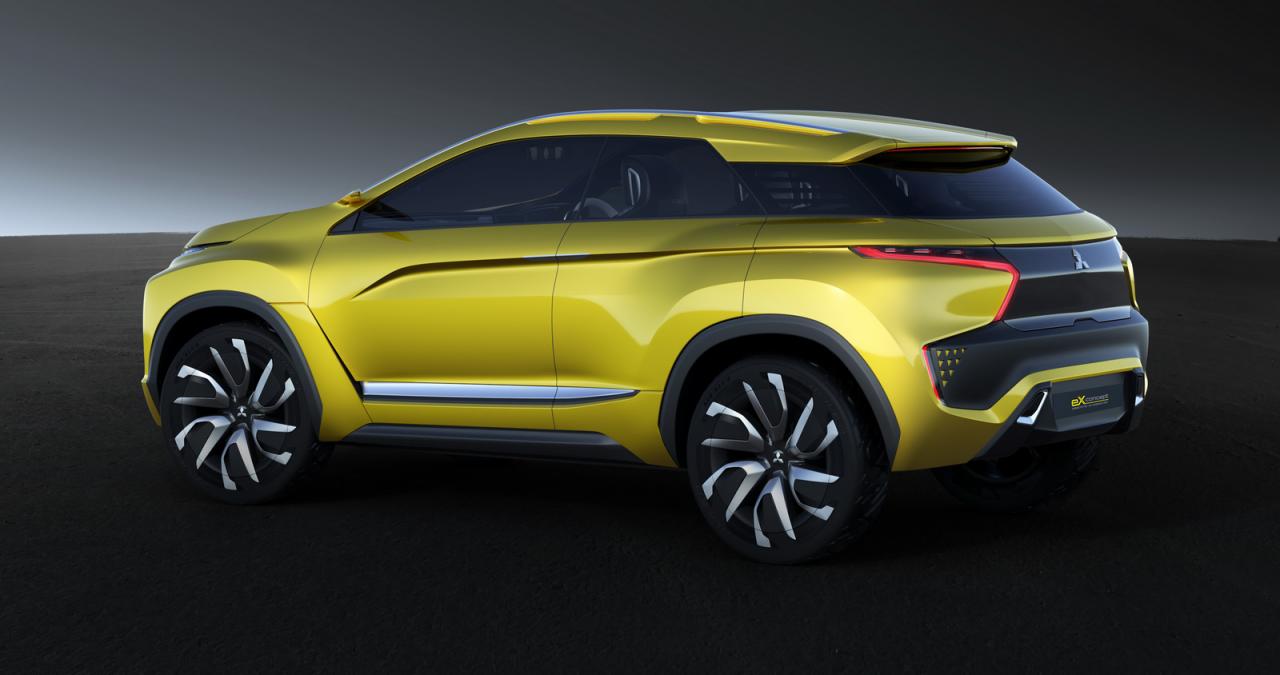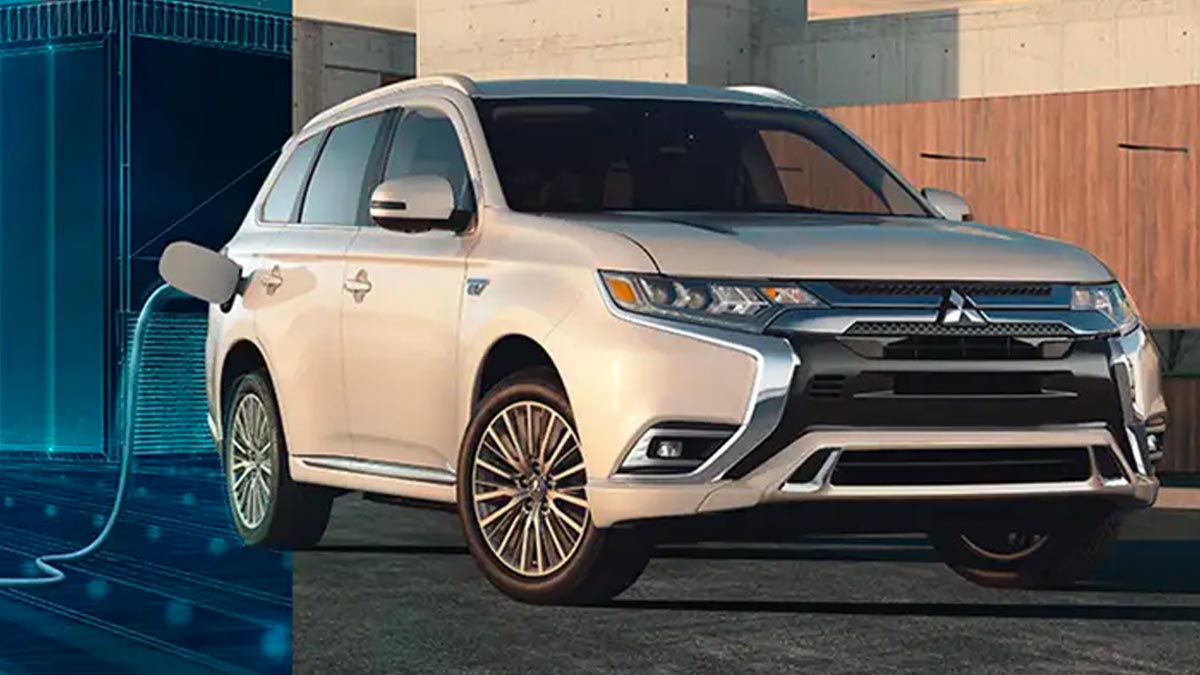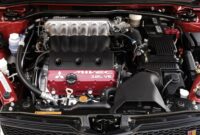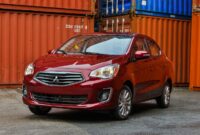Mitsubishi Electric Vehicle Future Plans and Models: Dive into the electrifying future of Mitsubishi Motors! This deep dive explores their current EV lineup, cutting-edge technology, ambitious future models, and the challenges they face in a rapidly evolving market. We’ll uncover their sustainability initiatives and strategic plans to conquer the electric vehicle race. Get ready for a thrilling ride!
From analyzing their existing models like the Outlander PHEV to speculating on upcoming releases and their innovative battery technology, we’ll dissect Mitsubishi’s approach to electric mobility. We’ll also examine their competition, market strategies, and the overall vision driving their electric vehicle journey. Buckle up, it’s going to be an exciting journey!
Current Mitsubishi Electric Vehicle Lineup
Mitsubishi Motors is making strides in the electric vehicle (EV) market, although its lineup is currently smaller compared to some major players. Their focus seems to be on offering practical and reliable EVs, rather than a wide array of models. Let’s take a closer look at their current offerings. The following table summarizes the key specifications of Mitsubishi’s electric vehicles.
Mitsubishi’s electric vehicle future is bright, with plans for a range of exciting new models on the horizon. However, understanding fuel efficiency in current models remains crucial, especially considering the real-world performance of existing vehicles. Check out these Mitsubishi Mirage fuel efficiency real-world tests to get a better grasp of current capabilities. This data informs development and helps Mitsubishi optimize future EV technology for maximum efficiency and range.
Note that specifications may vary slightly depending on the region and trim level.
Mitsubishi Electric Vehicle Specifications
| Model | Range (km) | Battery Size (kWh) | Power Output (kW) |
|---|---|---|---|
| Mitsubishi Outlander PHEV | 84 (WLTP, varies by trim and conditions) | 20 | 135 (combined petrol and electric) |
| Mitsubishi i-MiEV (discontinued in many markets) | ~160 (depending on model year and conditions) | 16 | 47 |
| Mitsubishi Eclipse Cross PHEV (discontinued in some markets) | ~55 (WLTP, varies by trim and conditions) | 13.8 | 80 (combined petrol and electric) |
Unique Selling Points of Mitsubishi Electric Vehicles
Mitsubishi’s approach to EVs emphasizes practicality and affordability. While not boasting the longest ranges or fastest charging times, their vehicles often stand out for their features and target market. The Outlander PHEV, for example, is a popular choice for those seeking a plug-in hybrid SUV with a balance of electric driving and petrol engine backup, ideal for longer journeys.
Its all-wheel drive capability further enhances its appeal in certain regions. The i-MiEV, though largely discontinued, was marketed as a compact and affordable city car, demonstrating Mitsubishi’s early commitment to electric mobility. The Eclipse Cross PHEV offered a similar plug-in hybrid approach in a smaller SUV format. Mitsubishi’s focus on established technologies, rather than bleeding-edge innovations, reflects a strategy of reliability and practicality over headline-grabbing performance.
Mitsubishi’s EV Technology and Infrastructure

Mitsubishi Motors is steadily advancing its electric vehicle (EV) technology and infrastructure, aiming for a significant market share in the burgeoning EV sector. Their strategy involves a multi-pronged approach encompassing battery technology advancements, strategic charging infrastructure partnerships, and a commitment to sustainable manufacturing. This commitment reflects a broader industry trend towards environmentally conscious vehicle production and reflects Mitsubishi’s dedication to reducing its carbon footprint.Mitsubishi’s current EV technology leverages a combination of proven and emerging technologies to optimize performance and efficiency.
The company focuses on improving battery energy density, extending range, and reducing charging times. This includes research into next-generation battery chemistries to enhance both performance and longevity. Furthermore, Mitsubishi actively collaborates with various partners to develop and implement charging infrastructure solutions, ensuring convenient and accessible charging for its EV owners. Their sustainable manufacturing practices are integrated throughout the entire vehicle lifecycle, from sourcing raw materials to end-of-life vehicle recycling.
Mitsubishi’s Battery Technology
Mitsubishi utilizes lithium-ion batteries in its current EV models. The specific chemistry and cell configurations vary depending on the model and its intended application. Ongoing research and development efforts focus on increasing energy density, thereby extending driving range, and improving battery lifespan and safety features. For example, they are exploring solid-state battery technology, known for its potential to offer higher energy density and improved safety compared to traditional lithium-ion batteries.
This aligns with the industry-wide push for longer-range EVs and enhanced safety features.
Charging Infrastructure Investments and Partnerships
Mitsubishi recognizes the crucial role of charging infrastructure in EV adoption. While they don’t directly own and operate a vast charging network, they actively collaborate with existing infrastructure providers and participate in initiatives aimed at expanding public charging access. These partnerships often include providing incentives for EV buyers, such as bundled charging plans or access to preferred charging networks.
This strategic approach ensures customers have convenient access to charging, addressing a common concern about EV ownership.
Sustainable Manufacturing Practices
Mitsubishi’s commitment to sustainability extends to its EV manufacturing processes. This involves reducing energy consumption during production, utilizing recycled materials whenever possible, and implementing responsible waste management strategies. Specific examples include optimizing energy efficiency in their factories, employing renewable energy sources, and implementing closed-loop recycling programs for battery components. These practices aim to minimize the environmental impact of EV production throughout its entire lifecycle, reflecting a growing industry-wide focus on eco-friendly manufacturing.
Infographic: Key Components of Mitsubishi’s EV Technology
The infographic would be visually appealing, utilizing a clean and modern design. A central image of a Mitsubishi EV would dominate the top half. Below, three distinct sections, each with a different color scheme, would detail the key components: Section 1: Battery Technology (Blue) This section would feature a cutaway diagram of a lithium-ion battery cell, highlighting key components like the anode, cathode, and electrolyte.
Accompanying text would briefly explain the function of each component and mention Mitsubishi’s research into next-generation battery technologies like solid-state batteries. Section 2: Charging Infrastructure (Green) This section would show a stylized map with icons representing various charging stations (fast charging, slow charging, home charging). Text would highlight Mitsubishi’s partnerships with charging network providers and initiatives aimed at expanding charging access. Section 3: Sustainable Manufacturing (Brown) This section would showcase images representing eco-friendly manufacturing practices, such as solar panels on a factory roof, recycled materials being used in production, and a recycling symbol.
Accompanying text would briefly explain Mitsubishi’s commitment to reducing energy consumption, using recycled materials, and responsible waste management.The infographic would conclude with the Mitsubishi Motors logo and a tagline emphasizing their commitment to sustainable mobility. The overall color palette would be earth-toned and environmentally conscious, reinforcing the message of sustainability.
Future Mitsubishi EV Models and Concepts
Mitsubishi, while relatively late to the full-electric vehicle game compared to some competitors, is steadily expanding its EV offerings. Their future plans hint at a broader range of models, leveraging their existing expertise in hybrid technology and aiming to capture a larger slice of the growing EV market. This expansion involves not just new models but also significant technological advancements.While concrete details remain scarce for many upcoming models, Mitsubishi’s strategy suggests a focus on practicality, affordability, and integrating their proven technologies into a wider range of electric vehicles.
This approach differs from some competitors who prioritize high-performance or luxury segments initially.
Upcoming Mitsubishi EV Models
Mitsubishi has been relatively tight-lipped about specific future EV models beyond their current lineup, primarily the Outlander PHEV and the Mirage EV (available in select markets). However, industry analysts and rumors suggest a potential expansion into various segments. We might see future models based on existing platforms, adapted for electric powertrains, potentially including compact crossovers, small SUVs, and possibly even a larger electric SUV to compete directly with established players.
Specific release dates remain unconfirmed, but a gradual rollout over the next few years is anticipated, aligning with the company’s overall electrification strategy. These future models are likely to build upon the success of the Outlander PHEV, incorporating its efficient hybrid technology and expanding its capabilities into a fully electric range.
Mitsubishi’s electric vehicle future is looking bright, with several exciting models on the horizon. However, their current lineup still boasts powerful vehicles like the Triton, whose ruggedness is a key selling point. To see how it stacks up against the competition, check out this comprehensive comparison: Mitsubishi Triton off-road capability comparison with competitors. Understanding the Triton’s capabilities helps contextualize Mitsubishi’s overall strategy as it navigates the transition to an electrified future.
Comparison with Current Offerings
Current Mitsubishi EVs, like the Outlander PHEV and Mirage EV, primarily focus on practicality and affordability. The Outlander PHEV offers a plug-in hybrid approach, combining electric and gasoline power, providing a balance between electric range and extended driving capabilities. The Mirage EV, on the other hand, is a smaller, more city-focused electric vehicle. Future models will likely expand on these core principles.
While maintaining a focus on affordability, future models might incorporate more advanced features, larger battery capacities for increased range, and potentially more powerful electric motors for improved performance. The design language could also evolve, moving towards a more modern and distinctive aesthetic that clearly differentiates them as dedicated EVs, rather than just electrified versions of existing gasoline-powered vehicles.
Key Features and Innovations in Upcoming Mitsubishi EVs
The lack of official announcements necessitates some speculation, but based on industry trends and Mitsubishi’s existing technology, we can anticipate several key features and innovations in upcoming models.
Several key features and innovations are expected in upcoming Mitsubishi EVs. These advancements aim to improve performance, efficiency, and overall driving experience.
- Increased Battery Range: Future models are expected to offer significantly larger battery capacities compared to the current Mirage EV, allowing for extended driving ranges, potentially exceeding 300 miles on a single charge, comparable to many competitors in their respective classes. This would directly address a major concern for potential EV buyers.
- Advanced Driver-Assistance Systems (ADAS): Mitsubishi will likely incorporate more advanced ADAS features, such as improved lane-keeping assist, adaptive cruise control, and potentially even autonomous driving capabilities in higher trim levels. This would bring them in line with industry standards for safety and convenience.
- Improved Charging Technology: Faster charging capabilities, potentially supporting higher charging rates (e.g., 150 kW or higher), are expected to reduce charging times, making electric vehicle ownership more convenient. This will be a key differentiator in a competitive market.
- Integration with Smart Home Technology: Expect seamless integration with smart home ecosystems, allowing for remote monitoring and control of charging schedules and vehicle functions through smartphone apps. This aligns with the growing trend of connected car technology.
- Sustainable Materials: In line with broader industry trends towards sustainability, Mitsubishi may incorporate more recycled and sustainable materials in the manufacturing process of their future EVs, reducing their environmental footprint.
Mitsubishi’s EV Market Strategy and Competition

Mitsubishi Motors aims to carve a significant niche in the burgeoning electric vehicle market, leveraging its existing strengths and adapting to the rapidly evolving landscape. Their strategy involves a targeted approach, focusing on specific market segments and geographical areas to maximize impact and efficiency. This contrasts with some competitors who adopt a broader, more geographically dispersed strategy.Mitsubishi’s stated goals center around increasing its global EV sales significantly within the next decade.
While specific numerical targets may vary depending on market conditions and technological advancements, the overarching ambition is clear: to become a recognized and respected player in the global EV arena. This involves not only selling more EVs but also establishing a strong brand identity associated with reliability, efficiency, and innovative technology in the electric vehicle space.
Mitsubishi’s Target Market and Geographic Focus
Mitsubishi’s market strategy isn’t about dominating every segment. Instead, they are focusing on specific niches where their existing strengths can be leveraged effectively. This includes targeting environmentally conscious consumers who prioritize fuel efficiency and low running costs. Furthermore, Mitsubishi is strategically focusing on regions with supportive government policies and strong infrastructure for electric vehicles. For example, they’re prioritizing markets in Europe and Asia, particularly those with established charging networks and substantial incentives for EV adoption.
This targeted approach allows them to allocate resources efficiently and build a strong foundation in key markets before expanding more broadly.
Mitsubishi’s Main Competitors and Competitive Analysis
Mitsubishi faces stiff competition from established automotive giants and emerging EV startups. Major competitors include Tesla, known for its innovative technology and strong brand recognition, but also facing challenges in production scaling and customer service. Volkswagen, with its extensive global reach and various EV models, poses a significant threat, as does Hyundai-Kia, which has made considerable strides in the EV sector with a wide range of models at competitive price points.
Nissan, a long-time player in the electric vehicle market with the Leaf, presents another key competitor, though it faces challenges in keeping pace with newer entrants. Each competitor has its strengths and weaknesses; Tesla’s technological edge is countered by its higher price point, while Volkswagen’s broad range can be diluted by a lack of distinctive brand identity in some EV models.
Mitsubishi’s strategy focuses on carving out a niche where it can compete effectively, leveraging its reputation for reliability and efficiency.
Mitsubishi’s Plans for Expanding EV Market Share
Mitsubishi’s plans for expanding its EV market share involve a multi-pronged approach. This includes continued investment in research and development to enhance battery technology, charging infrastructure, and overall vehicle performance. Strategic partnerships and collaborations with other companies in the automotive and technology sectors are also key to their strategy. Expanding their dealer network and providing enhanced customer service to address customer concerns and build loyalty are also vital.
Finally, Mitsubishi is investing in marketing and branding to build awareness and improve the perception of its electric vehicles, highlighting their unique selling propositions and emphasizing the value proposition for customers. Their success will hinge on the effective execution of this strategy and the ability to adapt to the ever-changing dynamics of the EV market.
Challenges and Opportunities for Mitsubishi in the EV Market
Mitsubishi Motors, while a respected name in the automotive industry, faces a challenging landscape as it navigates the rapidly evolving electric vehicle (EV) market. The company needs to strategically address several key hurdles to successfully compete with established EV players and emerging newcomers. Simultaneously, significant opportunities exist for growth and market share expansion if the right moves are made.The competitive landscape is fiercely contested, demanding innovative solutions and strategic foresight from Mitsubishi to carve out a sustainable niche.
The company’s success hinges on its ability to leverage its existing strengths while proactively mitigating potential weaknesses in the face of intensifying global competition.
Supply Chain Vulnerabilities and Resource Acquisition
Securing a consistent and reliable supply of crucial EV components, such as batteries, semiconductors, and rare earth minerals, poses a significant challenge for Mitsubishi. Global supply chain disruptions, geopolitical instability, and increasing demand for these materials create volatility in pricing and availability. For example, the recent global chip shortage significantly impacted automotive production across the board, highlighting the vulnerability of relying on a complex and geographically dispersed supply chain.
To mitigate this, Mitsubishi needs to diversify its sourcing, invest in strategic partnerships with component suppliers, and explore alternative material technologies to reduce reliance on scarce resources. This could involve vertical integration in certain areas or forging closer relationships with suppliers to secure preferential access to components.
Technological Advancements and Innovation
The rapid pace of technological innovation in the EV sector necessitates continuous investment in research and development. Competitors are constantly introducing new battery technologies, charging infrastructure solutions, and advanced driver-assistance systems (ADAS). Mitsubishi needs to invest heavily in R&D to remain competitive, focusing on areas like battery efficiency, range optimization, and the integration of cutting-edge ADAS features. Failure to keep pace with technological advancements could lead to product obsolescence and a loss of market share.
A successful strategy might involve strategic alliances with technology companies specializing in specific EV components or software solutions, allowing Mitsubishi to leverage external expertise and accelerate its innovation cycle.
Consumer Adoption and Market Perception
Consumer acceptance of EVs is crucial for Mitsubishi’s success. Many consumers remain hesitant due to concerns about range anxiety, charging infrastructure availability, and the higher initial purchase price of EVs compared to internal combustion engine (ICE) vehicles. Mitsubishi needs to actively address these concerns through targeted marketing campaigns that highlight the benefits of EV ownership, such as lower running costs and environmental friendliness.
Furthermore, investing in expanding charging infrastructure and offering attractive financing options can encourage greater consumer adoption. A successful example is Tesla’s Supercharger network, which significantly alleviated range anxiety for its customers. Mitsubishi could learn from this and focus on building a robust charging network or partnering with existing providers.
Opportunities for Mitsubishi in the EV Market, Mitsubishi electric vehicle future plans and models
Despite the challenges, significant opportunities exist for Mitsubishi in the growing EV market. The company’s strong brand reputation, particularly in specific markets, provides a solid foundation for building a successful EV portfolio. Furthermore, the increasing government regulations and incentives aimed at promoting EV adoption create a favorable environment for Mitsubishi to gain market share. Mitsubishi’s expertise in all-wheel-drive technology could be a significant differentiator in the EV market, particularly in regions with challenging weather conditions.
This could be effectively marketed to consumers seeking enhanced safety and performance in adverse driving conditions. Additionally, focusing on niche segments, such as compact EVs or commercial EVs, could allow Mitsubishi to avoid direct competition with larger players and establish a strong foothold in specific market niches.
Mitsubishi’s Commitment to Sustainability and Electric Mobility: Mitsubishi Electric Vehicle Future Plans And Models
Mitsubishi Motors, recognizing the urgent need for environmental responsibility and the growing demand for sustainable transportation, has publicly declared its commitment to a future powered by electric mobility. This commitment isn’t merely a marketing ploy; it’s woven into the fabric of their long-term strategy, influencing their vehicle development, manufacturing processes, and even their engagement with communities. Their actions demonstrate a genuine effort to reduce their carbon footprint and contribute to a greener planet.Mitsubishi’s dedication to sustainability and electric vehicles is multifaceted.
It’s evident in their investment in research and development of advanced battery technologies, their expansion of their electric vehicle lineup, and their active participation in initiatives promoting the widespread adoption of EVs. This commitment isn’t limited to technological advancements; it also encompasses efforts to improve energy efficiency across their operations and reduce waste throughout their supply chain. They’re actively pursuing a holistic approach, recognizing that true sustainability requires a systemic change.
Mitsubishi’s Public Statements on Sustainability
Mitsubishi Motors has consistently emphasized its commitment to reducing greenhouse gas emissions and promoting sustainable mobility in its official publications, press releases, and investor reports. These statements often highlight targets for carbon neutrality and the expansion of their EV portfolio. For example, they’ve publicly announced ambitious goals for electric vehicle sales penetration within specific timeframes, demonstrating a tangible commitment to market leadership in the EV sector.
These public statements are often accompanied by details of their investment in research and development of key technologies like battery improvements and efficient electric powertrains.
Initiatives Promoting EV Adoption
To accelerate the adoption of electric vehicles, Mitsubishi Motors has undertaken several initiatives. These include collaborations with charging infrastructure providers to expand the network of public charging stations, offering attractive financial incentives and leasing options for their EV models, and investing in educational programs to raise public awareness about the benefits of electric vehicles. They also actively participate in industry collaborations to establish common standards and promote the development of a robust EV ecosystem.
A strong focus on customer education and providing comprehensive support throughout the ownership experience is key to their strategy.
Mitsubishi’s Vision for Electric Transportation
Mitsubishi Motors envisions a future where electric vehicles are the dominant form of personal transportation, contributing significantly to a cleaner and more sustainable environment. Their long-term vision goes beyond simply selling electric cars; it involves actively shaping the infrastructure and ecosystem necessary to support widespread EV adoption. This includes contributing to advancements in battery technology, promoting responsible resource management, and advocating for supportive government policies that encourage the transition to electric mobility.
Ultimately, Mitsubishi aims to be a leading force in the global shift towards sustainable transportation, not just as a manufacturer, but as a responsible corporate citizen.


